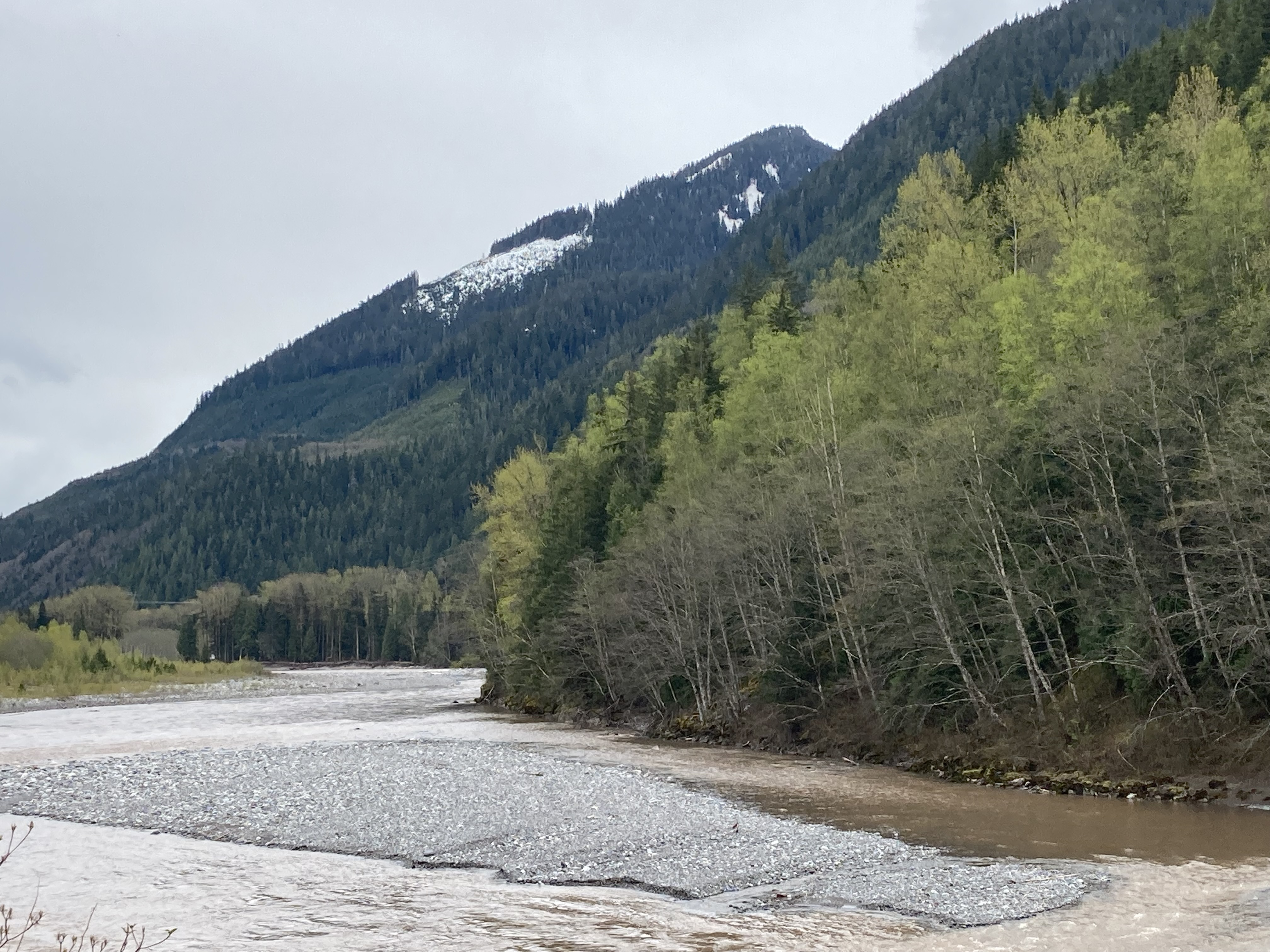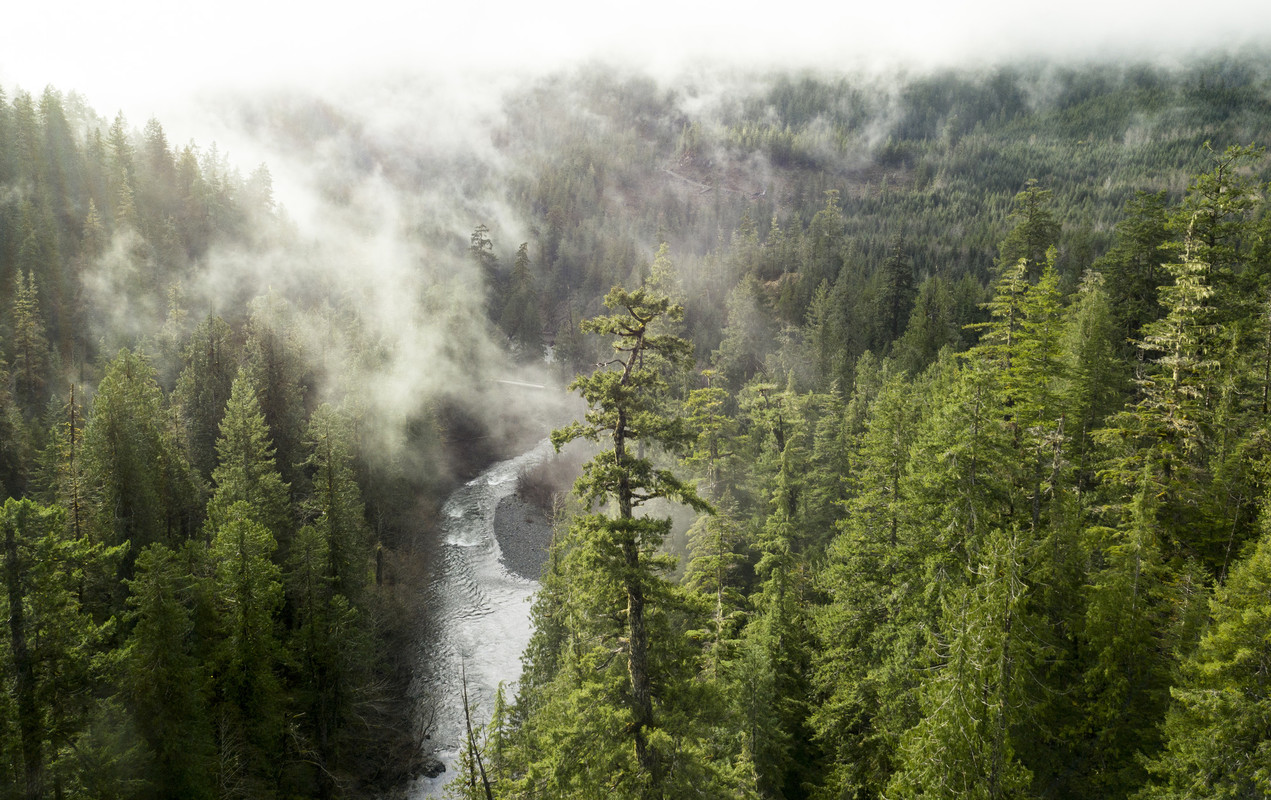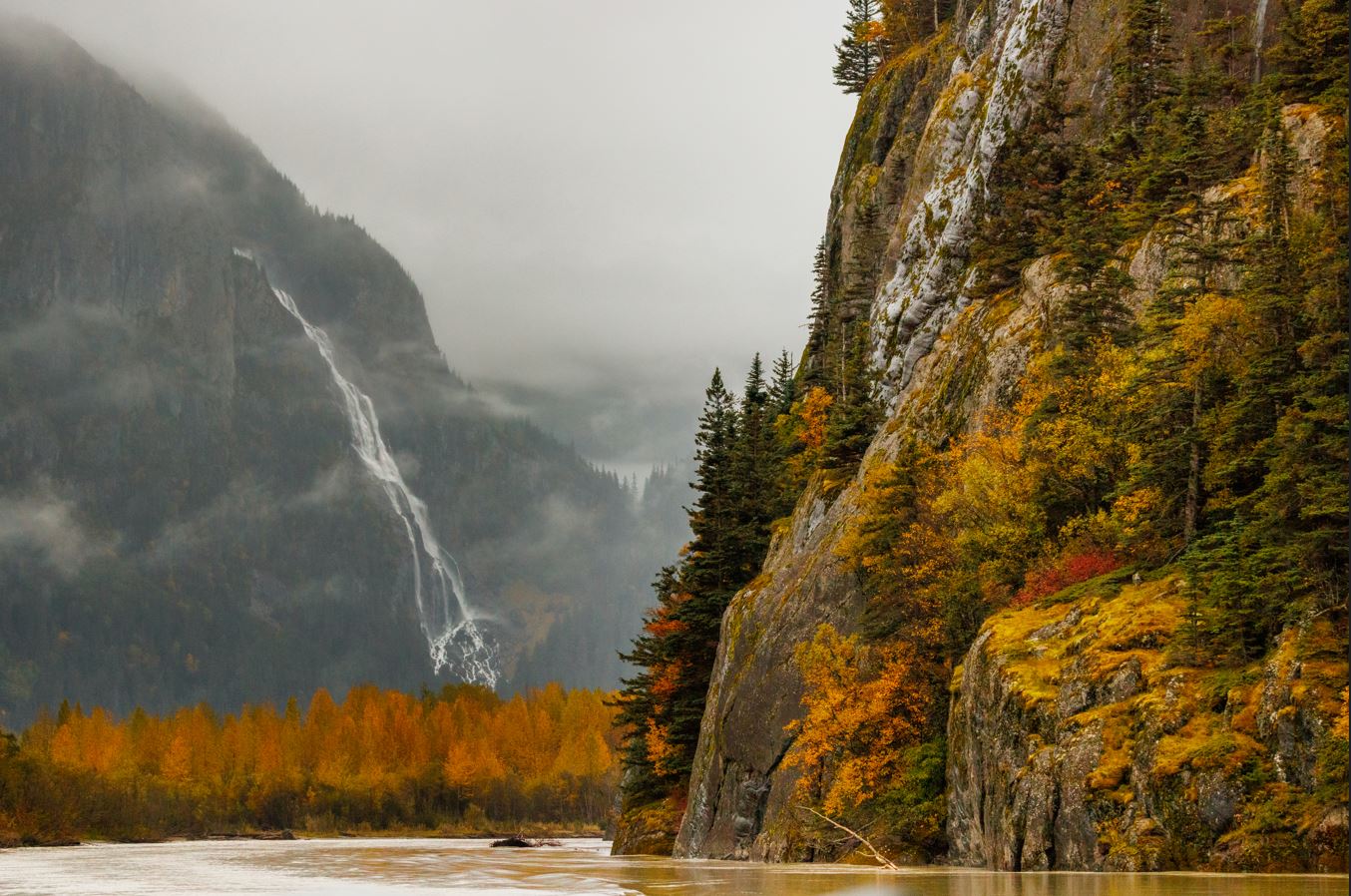
Kitselas Treaty and Kitsumkalum Treaty Negotiations
On this page…
open
Contact: Kitselas.Kitsumkalum@gov.bc.ca
Overview
Who: Kitselas First Nation and Kitsumkalum First Nation, the Government of Canada and the Province of British Columbia
What: Treaty negotiations
Where: Northwest B.C.
Why: Constitutionally protected agreements that set the relationship to work toward common goals of reconciliation and recognition of First Nations rights and title, to partner on shared priorities and to create jurisdictional and operational certainty in the region
How: In-person, online
Treaty progress overview
Since the early 1990s, Kitselas First Nation (Kitselas) and Kitsumkalum First Nation (Kitsumkalum) have been involved in treaty negotiations with the Government of Canada (Canada) and the Province of British Columbia (B.C.).
Although the two First Nations negotiated their treaties together at a common table, the negotiations will result in two distinct, separate treaties: the Kitselas Treaty and the Kitsumkalum Treaty. These negotiations are now concluding the Negotiation to Finalize a Treaty stage of the B.C. treaty negotiations process. Read more about that process here. The treaty table includes Kitselas, Kitsumkalum, Canada, B.C., the BC Treaty Commission, the Tsimshian First Nations Treaty Society and a representative from the Kitimat-Stikine Regional District.
On June 24, 2024, Kitselas First Nation, B.C. and Canada marked the conclusion of substantive treaty negotiations with Chief Negotiators initialling the Kitselas Treaty.
On June 25, 2024, Kitsumkalum First Nation, B.C. and Canada marked the conclusion of substantive treaty negotiations with Chief Negotiators initialling the Kitsumkalum Treaty.
Initialling marks an important milestone in the treaty journey, as it signals the conclusion of substantive negotiations. Initialling is subject to important caveats, including Canada and B.C. fulfilling its duty to consult other First Nations and the completion of a final legal review of the treaties.
Read the ratification version Kitselas Treaty: A Living Agreement (PDF, 3MB) and Kitselas Treaty: A Living Agreement Appendices (PDF, 14MB).
Read the ratification version of the Kitsumkalum Treaty: A Living Agreement (PDF, 3MB) and Kitsumkalum Treaty: A Living Agreement Appendices (PDF, 20MB).
Please note these versions of the Treaties and Appendices replaces the previous initialled versions. The ratification versions reflect revisions to the two treaties and appendices based on legal and technical review as well as the resolution of a number of outstanding matters.
A Kitselas Atlas (PDF, 27MB) contains larger versions of four critical maps from the appendices to better show map boundaries.
A Kitsumkalum Atlas (PDF, 29MB) contains several maps that are in addition to the appendices to better show map boundaries.
The Nations
Kitselas and Kitsumkalum are members of the Tsimshian First Nations Treaty Society, which represents multiple Tsimshian Nations whose combined territory spans the northwest coast and the lower Skeena River, including the Prince Rupert and Terrace areas. Members of the Society are negotiating separate treaties or reconciliation agreements.
Their shared language, Sm’algyax, is a dialect of the Tsimshian language. In Sm’algyax, Gitselasu (Kitselas) means ‘people of the Canyon’ referring to the Kitselas Canyon, and Gitsm’geelm (Kitsumkalum) refers to the riffles in the water as it runs over the rocks, while another description refers to ‘people of the Plateau .
Kitselas First Nation has a population of approximately 745 members. Most live on the Kitselas reserve of Gitaus, a 15-minute drive east of Terrace, or in Kulspai, a smaller reserve south of Terrace.
Kitsumkalum First Nation has a population of approximately 825 members, with approximately a third living on reserve, a 10-minute drive west of Terrace.
Both Kitselas and Kitsumkalum are active in the regional economy and have positive and long-standing relationships with local governments.
Summary of treaty negotiations
Kitselas and Kitsumkalum entered treaty negotiations in the early 1990s. In 2015, negotiators for Kitsumkalum First Nation, Kitselas First Nation, Canada, and B.C. reached Agreements-in-Principle (AIP) with each First Nation, establishing agreement on the substantive elements to be detailed in the completed treaties. In the years since, B.C., Kitselas, and Kitsumkalum have engaged with all levels of government, industry, interest holders, and people in the region on various elements of the proposed treaties.
Initialling the treaties signalled the conclusion of substantive negotiations, subject to certain caveats such as legal and technical review and ongoing consultation with neighbouring First Nations.
The legal and technical review of the Kitselas Treaty concluded in January 2025, resulting in the ratification version of the Kitselas Treaty.
The legal and technical review of the Kitsumkalum Treaty concluded in June 2025, resulting in the ratification version of the Kitsumkalum Treaty.
After these steps are completed, it sets the stage for an approval process called ratification, in which the First Nation, B.C. and Canada seek approval to sign the treaty. Ratification is the approval process that treaties must go through before they can come into effect.
In the first step of ratification, eligible voters of the First Nation hold a vote on whether or not to approve the treaty and a self-government constitution. Ratification of the treaty and constitution requires a double majority vote outcome by eligible voters. This means more than 50% of eligible voters on the voters list must cast a ballot, and more than 50% of those voters must cast a ballot in favour of the treaty and constitution.
Should eligible voters vote in favour of ratifying the treaty and constitution, B.C. and Canada will undergo their own respective ratification approval processes. This includes passing provincial treaty implementation legislation, all parties signing the treaty, and then the passing of federal treaty implementation legislation to bring the treaty into law.
The ratification stage takes several years. If successfully ratified, the treaty comes into effect on the “effective date,” which is usually a couple of years after it is signed. On the effective date, treaty lands are owned and governed by the Treaty Nation and the Treaty Nation government operations begin.
On April 10, 2025, Kitselas First Nation held their ratification vote for eligible voters, who voted in favour of ratifying their treaty and self-government constitution. Of the more than 95% of eligible voters who voted on the treaty and constitution, 85% voted “yes” on the treaty and 81% voted “yes” on the constitution. Based on these results, the ratification vote thresholds were met.
On November 1, 2025, Kitsumkalum First Nation held their ratification vote for eligible voters, who voted in favour of ratifying their treaty and self-government constitution. Of the 705 eligible voters, 625 cast ballots on the treaty with 569 (approximately 91%) voting “yes;” 629 cast ballots on the constitution, with 563 (approximately 89.5%) voting “yes.” Based on these results, the ratification vote thresholds were met.
Overview of the proposed treaties
Kitselas, Kitsumkalum, B.C. and Canada have been negotiating the agreements in stages, with consultations with other First Nations, the public and interest holders throughout. Local government representatives have also sat at the negotiation table as part of the provincial negotiating team. This approach provided opportunities for people and key interest holders to share their needs and help shape treaty provisions that work for all. As a result, the treaties reflect work done together on shared regional priorities established in the 2015 AIPs.
The proposed treaties:
- Ensure Aboriginal rights are recognized and not extinguished for Kitselas and Kitsumkalum and describe the parties’ agreement on the exercise of rights
- Clarify that the treaties do not infringe or extinguish the rights of neighbouring First Nations
- Lay out negotiated approaches to self governance and law-making authorities
- Confirm lands to be owned and governed by each First Nation
- Address existing interests and tenures on proposed treaty lands (interest-holders have been engaged on the proposed approach to their tenure or interest)
- Allow public access on non-private treaty lands for hunting, fishing, hiking, skiing and other recreational use
- Formalize consultation processes with Kitselas and Kitsumkalum moving forward, and
- Describe opportunities for the co-management of lands and resources within the First Nations’ traditional territory
More information about the Kitselas Treaty and Kitsumkalum Treaty can be found in the following fact sheets:
Recent engagement
In the spring of 2023, Kitselas, Kitsumkalum, Canada and B.C. engaged with local communities in the region.
Members of the public joined the treaty partners at an open house in May 2023 to find out more and share input on the two proposed treaties. In June 2023, treaty table representatives held a virtual open house for the public. These sessions took place as negotiations moved to the final stage and included information about lands proposed to become Treaty Lands.
A What We Heard Report was developed from discussions with the public on the closing of treaty negotiations. This report describes the engagement activities and participation, and includes feedback and questions collected during the engagement process along with responses given by the negotiating partners.
Read the What We Heard Report (PDF, 1MB)
Over the past several years, correspondence has been sent to, and meetings have been held with, interest and tenure holders to discuss forms of replacement tenures and the arrangements for continuation of interests such as water licenses and traplines.
Throughout the next steps of this process, there will be further opportunities for regional and public engagement, as well as ongoing consultation with neighbouring First Nations.
What’s next
The ratification process takes several years.
With eligible voters of Kitselas First Nation voting in favour of ratifying the Kitselas Treaty and self-government constitution in April 2025, the next step in the process is for B.C. to ratify the treaty. B.C. expects to introduce treaty implementation legislation to the B.C. Legislative Assembly in 2026. If this legislation passes, the treaty will be provincially ratified.
With eligible voters of Kitsumkalum First Nation voting in favour of ratifying the Kitsumkalum Treaty and self-government constitution in November 2025, the next step in the process is for B.C. to ratify the treaty. B.C. expects to introduce treaty implementation legislation to the B.C. Legislative Assembly in 2026. If this legislation passes, the treaty will be provincially ratified.
For each treaty, after provincial ratification is complete, all parties sign the treaty and finally Canada ratifies by passing treaty implementation legislation in the Canadian Parliament. If ratified by all parties, the Kitselas Treaty and Kitsumkalum Treaty are expected to have an effective date in 2028 at the earliest.
The First Nations and the provincial and federal governments will conduct ongoing public engagement during this period, so everyone who is potentially impacted by the treaties is kept informed. Canada and B.C. will also continue its consultation process with neighbouring First Nations during this period.
Make sure to sign-up for email updates to find out about future engagement opportunities and key milestones in treaty negotiations: Kitselas.Kitsumkalum@gov.bc.ca.
About modern treaties
Treaties signed today are known as modern treaties. Modern treaties in B.C. (other than the first modern treaty in B.C., the Nisg̱a’a treaty) are negotiated under the B.C. treaty negotiations process, facilitated by the British Columbia Treaty Commission. Treaties are comprehensive, living agreements protected under the Canadian constitution. They promote positive and stable conditions to support each First Nation’s government, community well-being and economic growth.
Modern treaties outline the First Nation’s responsibilities and jurisdictions over treaty lands, such as ownership, access, governance, taxation and environmental management. Treaties empower First Nations to step out of the Indian Act’s legislative control. As living agreements, these treaties do not freeze rights in time. Rather, they are foundations from which First Nations can build partnerships, expand economic development and support their community’s social well-being.
Modern treaties are one pathway for reconciliation that help move away from conflict and uncertainty. Treaties recognize that neighbours are stronger working together and help build a brighter future for everyone. Treaties give certainty, ending the application of laws and policies that deny equal opportunity and reconcile First Nations rights with other rights, rather than replacing or extinguishing those rights.
By bringing together First Nations, Canada and B.C. for formal negotiations with public consultation, modern treaties are also an opportunity for local communities to share their needs and challenges to shape treaty provisions. As a result, modern treaties provide significant benefits for all people in their regions, stronger community bonds, and plans to work together on shared priorities.
Examples of benefits that have come from modern treaties include:
- Local Investment: Treaties include funding from the federal government which are invested by First Nations directly in B.C.’s local communities, including funding education, cultural vitality, land and water-management, homes for people and economic development to build strong, safe and healthy communities. A well-known Deloitte1 study shows every dollar invested in agreements like treaties generates more than double in return in terms of economic activity.
- Social Well-Being and Empowerment: Treaties include protection and revitalization of First Nations culture, language and heritage. Canada’s Community Well-Being Index (CWB) shows overall higher well-being in modern treaty regions following the conclusion of a treaty.
- Economic Opportunity and Prosperity: Modern Treaty Nations are diversifying local economies in culturally relevant ways, helping build B.C.’s strong, sustainable, clean economy.
- Services People Rely On: Treaties enable First Nations to develop revenue streams and build capacity in critical services such as housing, health care and education.
- Protecting our Land, Water and Resources: Treaties contain provisions that enable local communities and First Nations to work together to ensure local land, water and resources are managed sustainably.
1Deloitte (Oct 2016) “Socio-economic Benefits of Modern Treaties in BC”
Resources
British Columbia Treaty Commission (Treaty Commission)
Kitselas First Nations Treaty page
Kitsumkalum First Nations Treaty page
Kitselas Agreement-in-Principle (signed September 4, 2015)
Kitsumkalum Agreement-in-Principle (signed September 4, 2015)
Tsimshian First Nations Treaty Society
About Tsimshian First Nations Treaty Society (B.C.webpage)
About Kitselas First Nation (B.C.webpage)
About Kitsumkalum First Nation (B.C.webpage)
United Nations Declaration on the Rights of Indigenous Peoples
B.C. Declaration on the Rights of Indigenous Peoples Act
News releases
- Minister’s statement on Kitsumkalum Treaty and Constitution vote outcome: https://news.gov.bc.ca/32989
- Info bulletin on upcoming ratification vote for Kitsumkalum Treaty, Constitution: https://news.gov.bc.ca/32968
- Minister’s statement on Kitselas Treaty and Constitution vote outcome: https://news.gov.bc.ca/32217
- Info bulletin on upcoming ratification vote for Kitselas Treaty, Constitution: https://news.gov.bc.ca/32189
- Initialling draft Kitsumkalum Treaty news release: https://news.gov.bc.ca/31158
- Initialling draft Kitselas Treaty news release: https://news.gov.bc.ca/31160
- Public update information bulletin on treaty negotiations in Skeena region: https://news.gov.bc.ca/31123
- Public results information bulletin: https://news.gov.bc.ca/30297
- Public invitation information bulletin: https://news.gov.bc.ca/28820






